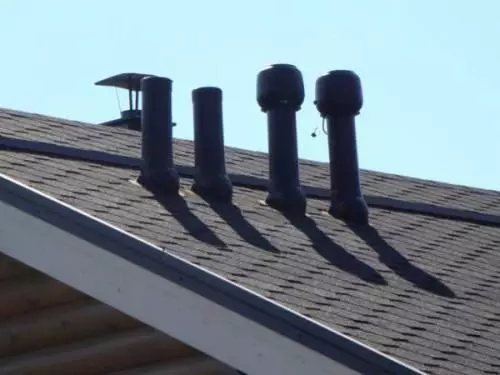
Such a "diversity" leads to the fact that chemical reactions, biological decomposition processes and other unpleasant processes, accompanied by the release of gases that have an unpleasant odor occur in pipelines. To protect the residential space, certain measures are taken from these smells to enter it: siphons are installed and sewage ventilation is equipped.
Sifones for sewage
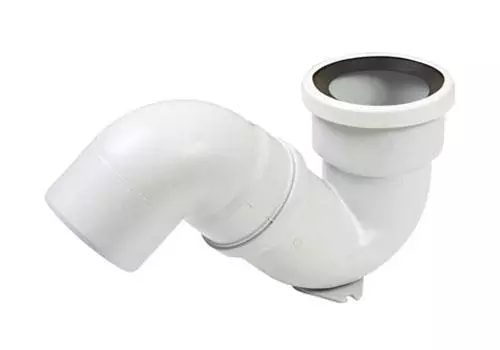
Siphons are U-shaped pipes that must be mounted in front of all plumbing devices: bathroom, washbasin, washing, toilet, etc. The form of a siphon provides accumulation of a certain amount of water overlapping all the cross section. Water remains in its lower part even after completing it to feed, not allowing gases from the system outward. With the normal operation of the system, such protection is quite effective, but there are cases where the siphons do not cope with their task. For example, if the plumbing does not use a long time, the water in the siphon will simply evaporate, opening the way outside the unpleasant odors. To avoid this, the drain holes of the plumbing devices must be closed by a plug, especially in cases where a long break is planned in their operation.
Another reason for the disappearance of water from the pipe is incorrect design and installation of sewage. When connecting two adjacent devices (for example, baths and a washbasin), the drains of them will fall into the overall drain, overlapping its entire cross section and forming a water cork. Such a plug, moving down the pipes, will create a vacuum on itself, which causes sucking the remains of water from the siphon. In this case, the unpleasant smell will penetrate the room until the siphon tube is again filled.
Article on the topic: Choose for the interior carved doors of wood
Sewage design. Diameter of pipes
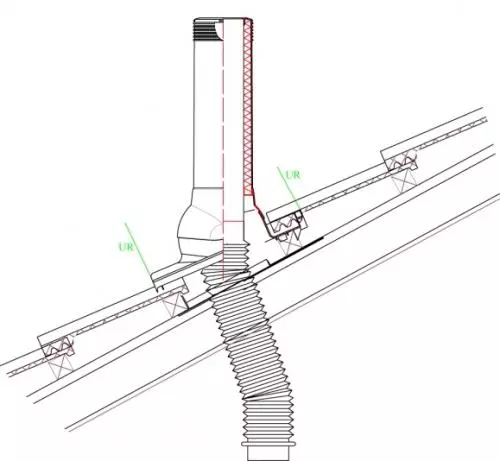
For stable operation of the sewer system, it is important to choose the properly diameter of the pipes. It should be large enough so that when passing the effluent, they did not overlap all the cross-section of the pipe, creating water jacks. When designing systems, experts to determine the necessary diameters are calculated, taking into account the number of devices connected to pipes, their type, the amount of effluent, etc. But there is a simpler way that allows you to approximate the desired cross section of pipes. So, the diameter of the pipes, which are used as a liner to the bidet and washbasins, should be 32-40 mm, eyeliner to the bathroom and washing - 50 mm, eyeliner to several devices, risers or disintegrating pipes - 70-75 mm, reducing pipes Pipes and toilet bowls - 100-110 mm.
Connecting plumbing
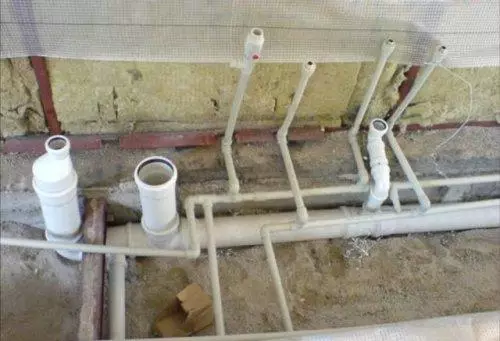
When connecting pipes, you need to follow the uncomplicated rules. All devices must be connected to the stuffing, and the latter must have the most short length and tilt toward the riser. The length of the pipes must be selected minimal. The longer the pipe, the greater the likelihood of the appearance of water plugs in it. Additional connections are not allowed between the stand and the toilet, which is due to the large amount of wastewater passing through the laying from the toilet, which can fill out all the cross-section, creating a plug.
Why do the sewage ventilation need? Ventilation device
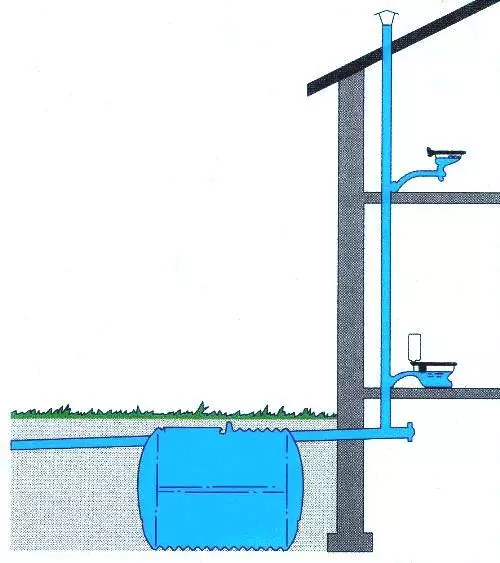
But even when complying with all the requirements for the design and installation of sewage, it will not be able to function normally without ventilation. The task of ventilation is to maintain normal pressure in the system by connecting its elements with an atmosphere.
For ventilation of risers, pipes are used (one on each riser), which are attached at their end and are equipped with deflectors. Deflectors protect ventilation pipes from trash and precipitation in them. Ventilation pipes maintain normal pressure in the system and control its differences when the wastewater is passed. Even with a large number of wastewater and their overlapping of the entire section, a vacuum will not be created at the top of the rising.
Article on the topic: Sealing joints of plasterboard - recommendations of professionals
The diameter of the ventilation pipe must match the diameter of the riser or be slightly large, the pipe itself is excreted on the roof to a height of 50-100 cm, which allows you to freely output gases from the system at any time of the year, without fear of contamination or falling asleep with snow. The pipe is desirable to mount away from the windows so that there are no unpleasant smells from it into the premises.
Ideally, each riser should have its own ventilation pipe with a deflector, but in some cases, in the construction of private houses it is possible to combine several risers with a single ventilation pipe with a large diameter. There is also a sewage scheme, in which ventilation is only on a distant riser, while the rest are equipped with aeration valves. It is impossible to equip all risers with aeration valves, since they only work in one direction, passing the air outside, and they cannot remove the gases from the system.
As noted above, when using long pipes, the operation of the sewer system gives a failure more often, and even ventilation riser here is powerless. When installing a supply, the length of which is more than 3 m, you need to organize their separate ventilation or use the pipes of a larger diameter. For example, a pipe with a diameter of 40 mm is usually used for a washbasin liner, if its length exceeds 3 m, you need to install a pipe with a diameter of 50 mm. With a pipe length, more than 5 m and its diameter 70-75 mm the latter increases to 100-110 mm. The diameter of the pipes used should also be increased if the difference in height is 1-3 m between their ends. In the case of installation of the toilet liner, in which the height difference between its ends is more than 1 m, it is necessary to organize additional ventilation.
Pipes of additional ventilation pipes can go to the roof, as well as the ventilation pipes of the risers, but this possibility is not always. As an option, you can consider the output of the ventilation pipes to the riser or installation of aeration valves. Valves are mounted in rooms at the end of the pipes. If the discharge occurs, they draw air outside, controlling the pressure drops in the system.
Article on the topic: Features of the valves of various modifications
